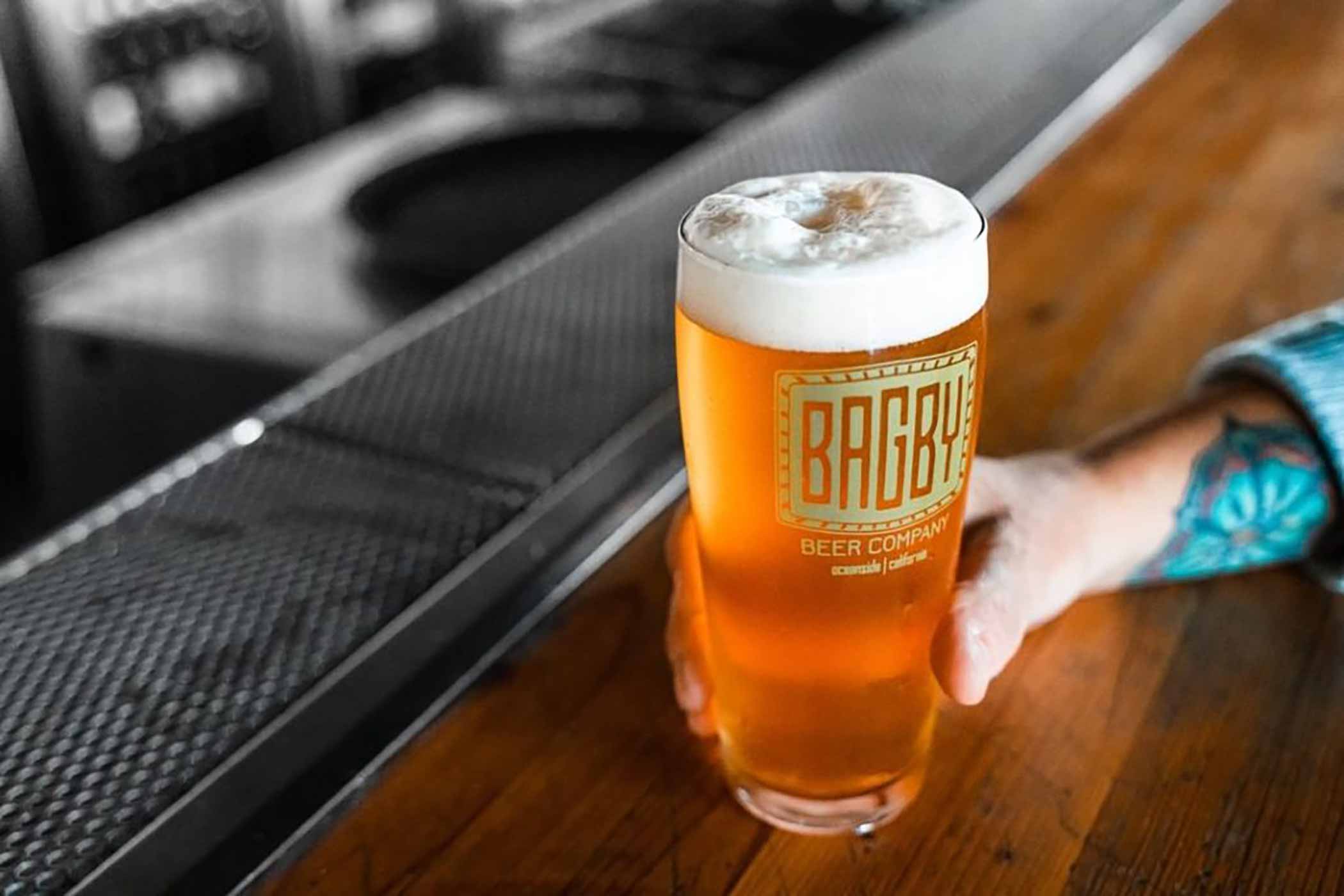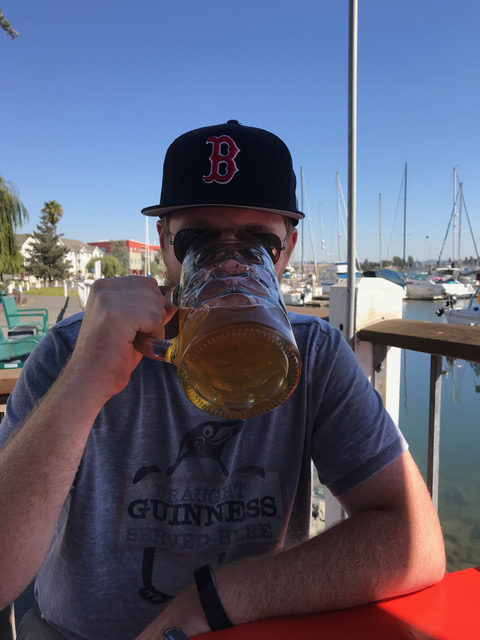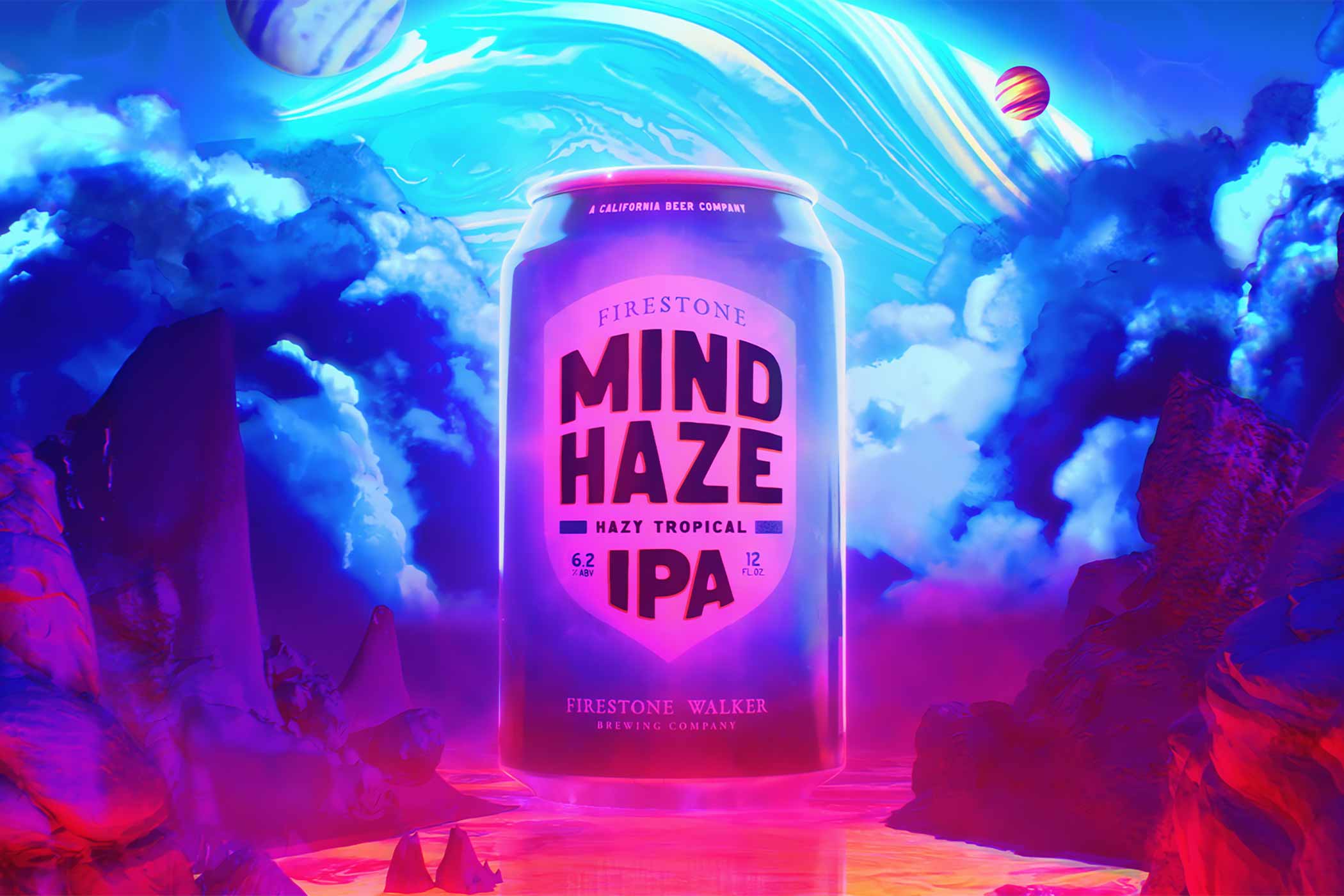Shop
Is West Coast IPA Finally Popular Again? (Or Did it Ever Go Away?)
The ultimate East Coast vs. West Coast IPA battle!
Throughout the last few centuries, beer styles have come and gone for various reasons: consumer tastes, scientific developments, ingredient availability (or discovery), and even war have all had a hand in the rise and fall of certain styles. Over the last half a decade or so, the craft beer industry has gone through an accelerated evolution, a sort of consumer-driven Darwinism at work. Honestly, one category in particular has hogged the headlines: India Pale Ale, aka IPA.
But even the vast category of IPA has seen its fair share of change. Some styles that enjoyed a short-lived success are now all but extinct: the Brut IPA and Black IPA (or Cascadian Dark Ale). Meanwhile, others like the New England-style or hazy IPA have thrived, showing up on every menu, draft line, and shelf that sells beer. In fact, many craft beer dynasties have been built on this uber popular haze.
But consumer preferences weren’t always about this trendy, turbid style. Before this cloudy East Coast category took flight, the crystal-clear West Coast IPAs reigned supreme.
Today, hazies are more popular than ever, with seemingly endless ways to display their aromas and flavors in all their glory. But where does this leave the West Coast IPA? Are people still drinking them and are brewers still making them? Are West Coast IPAs still popular?
Let’s find out.
First, What Is the History of Our Love Affair with Hops?
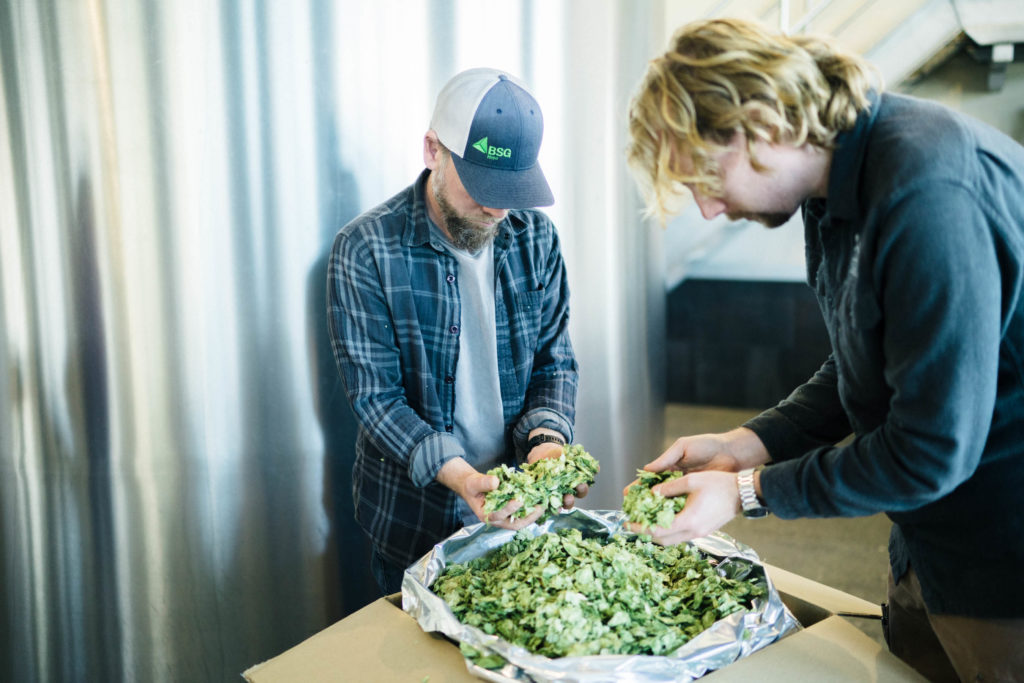
Photography courtesy of Firestone Walker
To understand the importance of the West Coast IPA, one has to understand the importance of hops in craft beer history.
Hops have become integral to the craft beer movement, entwined with the rise (and fall and rise) of IPAs. And by now it is well known that the history of hops and IPAs goes back a long way—all the way back to the 1780s and the British colonization of India. Unable to brew beer in the hot temperatures of India, the Brits needed to figure out a way to ship beer halfway across the world.
A London brewer by the name of George Hodgson from the Bow Brewery found the solution. He brewed an overly hopped beer to survive the six-month sail from Britain to India by using hops as a safeguard against spoilage. But the result was better than even he could expect—a beer that actually tasted great, too.
Interestingly enough, after a good run the style fell out of favor. That is, until good ol’ American craft brewers lifted the IPA out of forgotten beer lore with the American craft beer movement that gained steam in the late 1970s.
When Did the West Coast IPA First Appear?
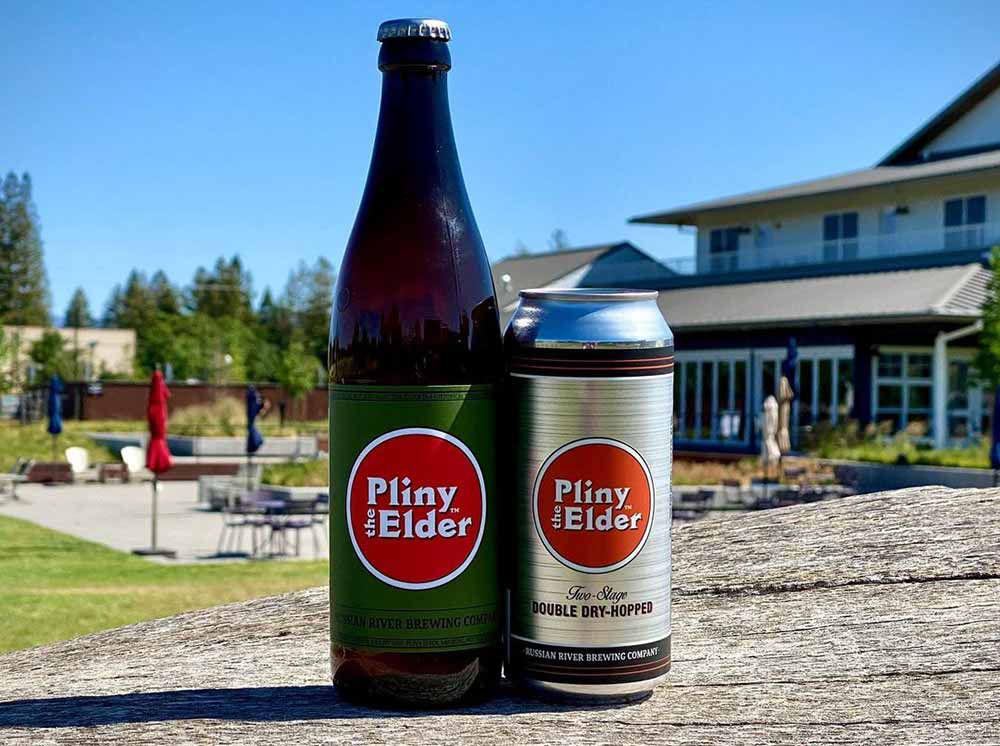
Photography courtesy of Russian River Brewing Company
A style born out of the American craft beer movement, the earliest origins of the West Coast IPA could probably be attributed to Fritz Maytag and his iconic Anchor Brewing. In 1965, Maytag brewed an English-style pale ale with American hops, using a little-known British technique called dry hopping and a little-known Oregon-grown hop variety at the time called Cascade. Liberty Ale (named to commemorate the 200th anniversary of Paul Revere’s ride) wasn’t called an IPA per se, but it could be said that it started a revolution.
Five years later, Ken Grossman at Sierra Nevada released his famous Sierra Nevada Pale Ale made with whole-cone Pacific Northwest American hops. Then in 1994, Vinnie Cilurzo brewed the first double IPA at Blind Pig Brewing Company that registered an incredible 92 International Bittering Units (IBUs), the official bitterness measurement in a beer.
The trend of beers with a high bitterness and local Pacific Northwest hops took off up and down the West Coast. The more craft brewers pushed the envelope with hops, the more the bitterness of the IPA went up too. In fact, many breweries attempted to crank out the highest level of IBUs in their beers. For example, beers like Stone’s RuinTen and Green Flash’s Palate Wrecker, that were even named after what they did to your taste buds.
While many brewers debate the accuracy of IBU measurements, or even the need for the number, there is no debate that hop bitterness has played a critical role in the constant evolution of the IPA.
And that bittering component is very distinctive of the West Coast IPA.
What Exactly Is a West Coast IPA?
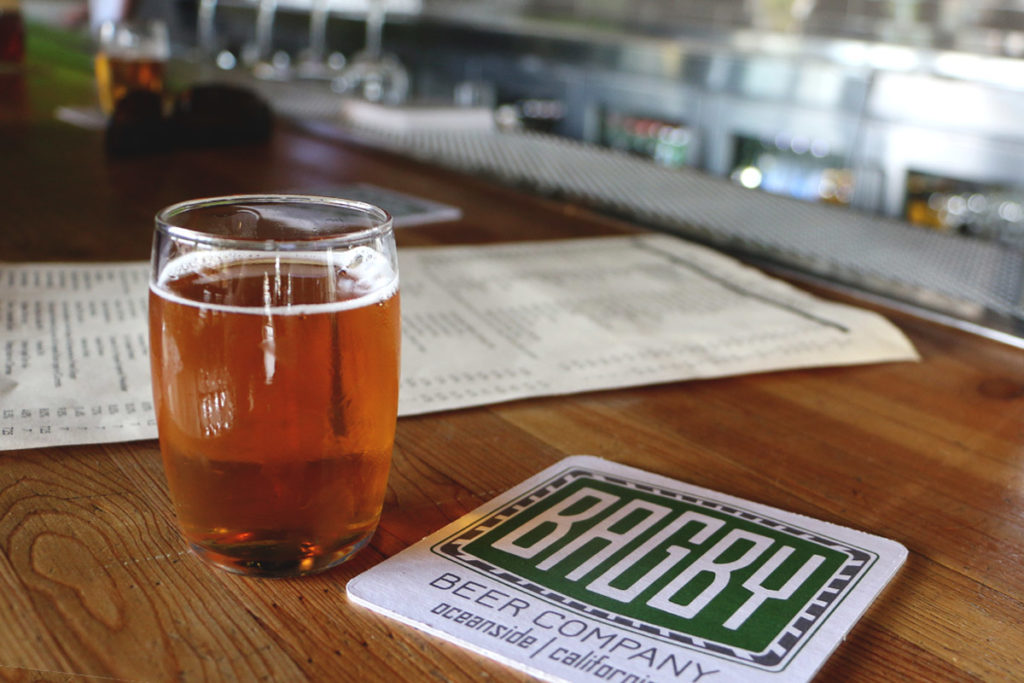
Photography courtesy of Bagby Beer Company | The Hop Review
Characterized by a distinct hop aroma, high bitterness, and notes of citrus and pine, West Coast IPAs turn out brilliantly clear. Traditionally brewed with a generous amount of hops in the boil, West Coast IPAs rely heavily on those little green hop cones.
Not just any hops, though.
These beers tend to feature American hops—historically Pacific Northwest hops—such as Cascade, Centennial, Columbus, and Chinook, among others.
West Coast IPAs drink with a classic bitterness, balanced by a slightly juicy and earthy flavor profile, characteristic of hops from Washington and Oregon.
Great examples of the West Coast IPA style include Stone Brewing’s Stone IPA, Green Flash Brewing Co.’s West Coast IPA, Bear Republic’s Racer 5, Firestone Walker’s Union Jack, and of course, Russian River Brewing Company’s Pliny the Elder (a beer Vinnie made from his influences at Blind Pig).
But what do all of these iconic beers have in common? Well, to be honest, they were first brewed a while ago. They can all trace their roots back to the ‘80s and ‘90s, and a few just after the turn of the century.
As we all know, beer styles have continued to evolve.
Most recently, a newer IPA style has come to dominate consumers’ taste buds.
West Coast IPA vs East Coast IPA
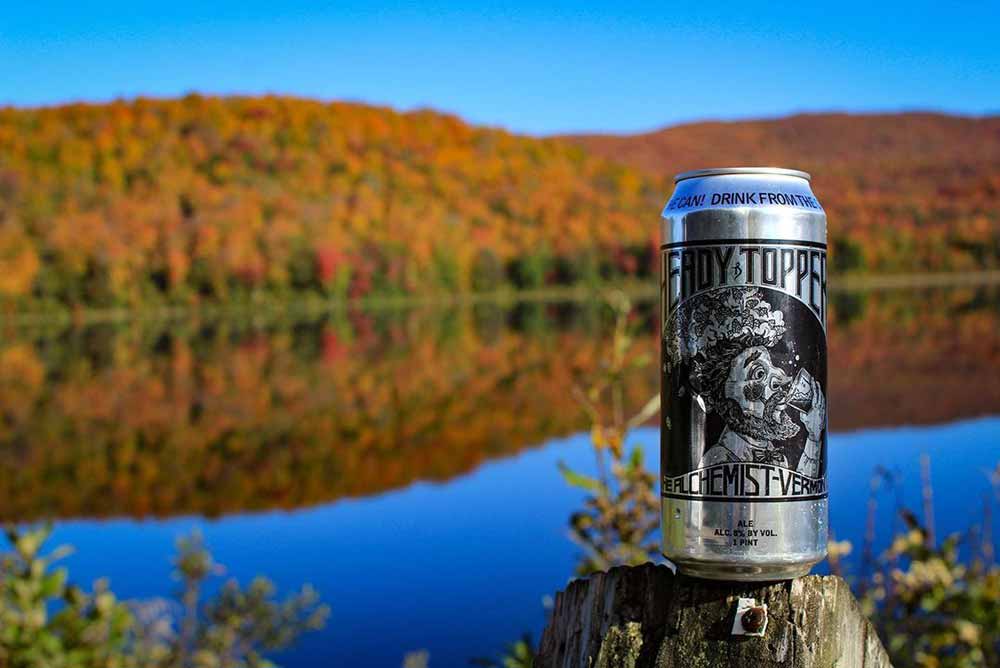
Photography courtesy of The Alchemist
Yes, of course we’re talking about the New England-style or hazy IPA.
While bitterness in IPAs skyrocketed on the West Coast, some brewers (and drinkers) began to explore a different direction. Widely thought of as that first spark that started the “New England-style” or “Vermont-style” IPA wildfire, The Alchemist’s Heady Topper helped set IPAs on a new course. One towards lower perceived bitterness, more intense aromatics, and a softer, rounder mouthfeel.
The resulting love affair with hazy IPA has had an almost incalculable impact on craft beer. For proof, look no further than the 2021 Great American Beer Festival: Brewers entered an astounding 427 entries in the Juicy or Hazy India Pale Ale category.
For the last half a decade, these juice bombs have spread everywhere in the craft beer marketplace. But even as the juice factor in hazy styles has intensified, plenty of consumers are rediscovering their love for bitter, clear, crisp IPAs.
Or maybe they are realizing that their love for West Coast IPAs never went away.
Is the West Coast IPA Popular Again? Or Did It Ever Go Away?
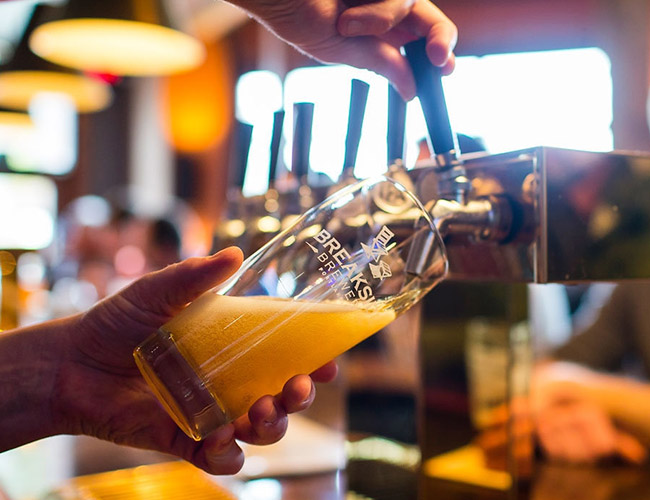
Photography courtesy of Breakside Brewery
At Breakside Brewery in Portland, OR, brewmaster Ben Edmunds wonders, “Did West Coast IPA really ever go away?” For many craft beer consumers (and brewers), West Coast IPA has always been popular, long before you needed clarification as to which coast your IPA repped.
Edmunds says that from his perspective in the Pacific Northwest, consumers have largely brushed off the hype of hazy IPAs. He estimates that Breakside actually brews clear IPA about ten times as often as they brew anything hazy.
Before hop haze became a sought-after characteristic, “It was always American IPA—it was bright, bitter, strong, aromatic,” says Jeff Bagby, founder of Bagby Beer Company in Oceanside, CA.
Bagby knows West Coast IPAs. Before opening his own brewery, he spent a decade at the iconic Pizza Port, after time at both Oggi’s and Stone. In fact, Bagby doesn’t brew any hazy IPAs. “I think if you ask any brewer, especially on the West Coast, what their top selling beer was over the last decade, it’s gonna be [West Coast] IPA,” says Bagby.
Less than an hour north of Oceanside, Green Cheek Beer Company embraces the haze, but also churns out clean, crisp West Coast IPAs. Ironically, Green Cheek brewed a playfully named beer, “West Coast IPA Is Dead!,” that won a GABF bronze medal in the American Style IPA category back in 2018. In that same vein, Green Cheek Co-owner and Brewer Evan Price says he has seen the longer-term fluctuation of West Coast IPA sales. Over the last year or so, Price says Green Cheek is seeing West Coast IPA can sales experience a bit of a resurgence, while draft sales have remained fairly steady.
Will Hazy IPAs Send a Cloud Over Clear West Coast IPAs in the Future?
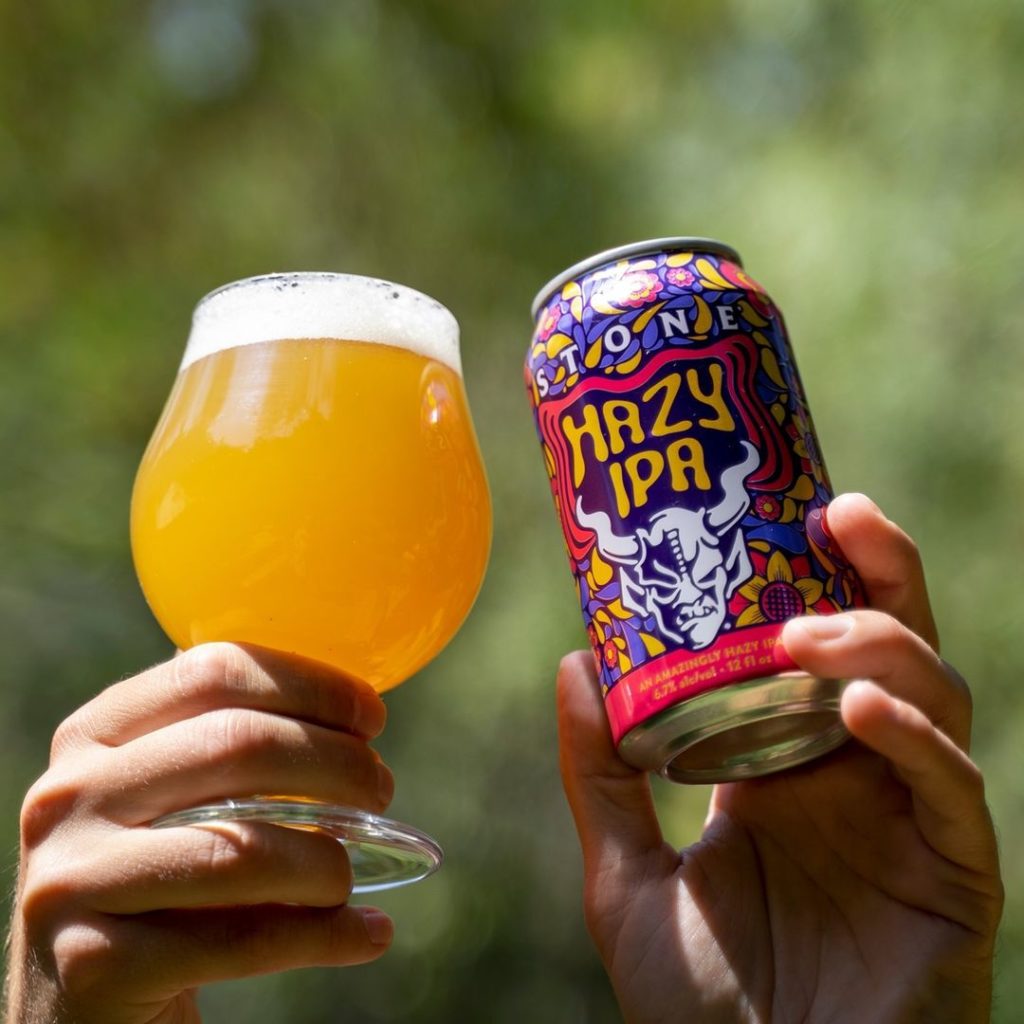
Photography courtesy of Stone Brewing
Perhaps to answer that question it’s best to look at data from the country’s largest and most well-respected craft beer festival.
Over the past three years, the Great American Beer Festival has received an increasing number of American-style IPA submissions year over year. Since introducing the Juicy or Hazy IPA category in 2018, that style has received more entries than the American-style in each of those same years.
But overall in 2021, both the American and the Juicy or Hazy IPA categories topped 400 entries, the highest number of entries in four years. This tells us at least one thing for certain: hoppy IPAs aren’t going anywhere.
While these numbers don’t paint a perfect picture, they do show that the popularity of hazy IPAs has not meant the death of West Coast IPA.
The relatively young hazy IPAs may be what attract the “in search of” comments on social media, but the West Coast IPA are definitely still vying for supremacy.
“While I think that a lot of the examples today have changed slightly, it’s definitely nice to see people still going for [West Coast IPAs],” says Bagby.
It seems that the West Coast IPA has always been popular and has proven it has staying power for years to come.
What Are a Few Iconic West Coast IPAs to Try?
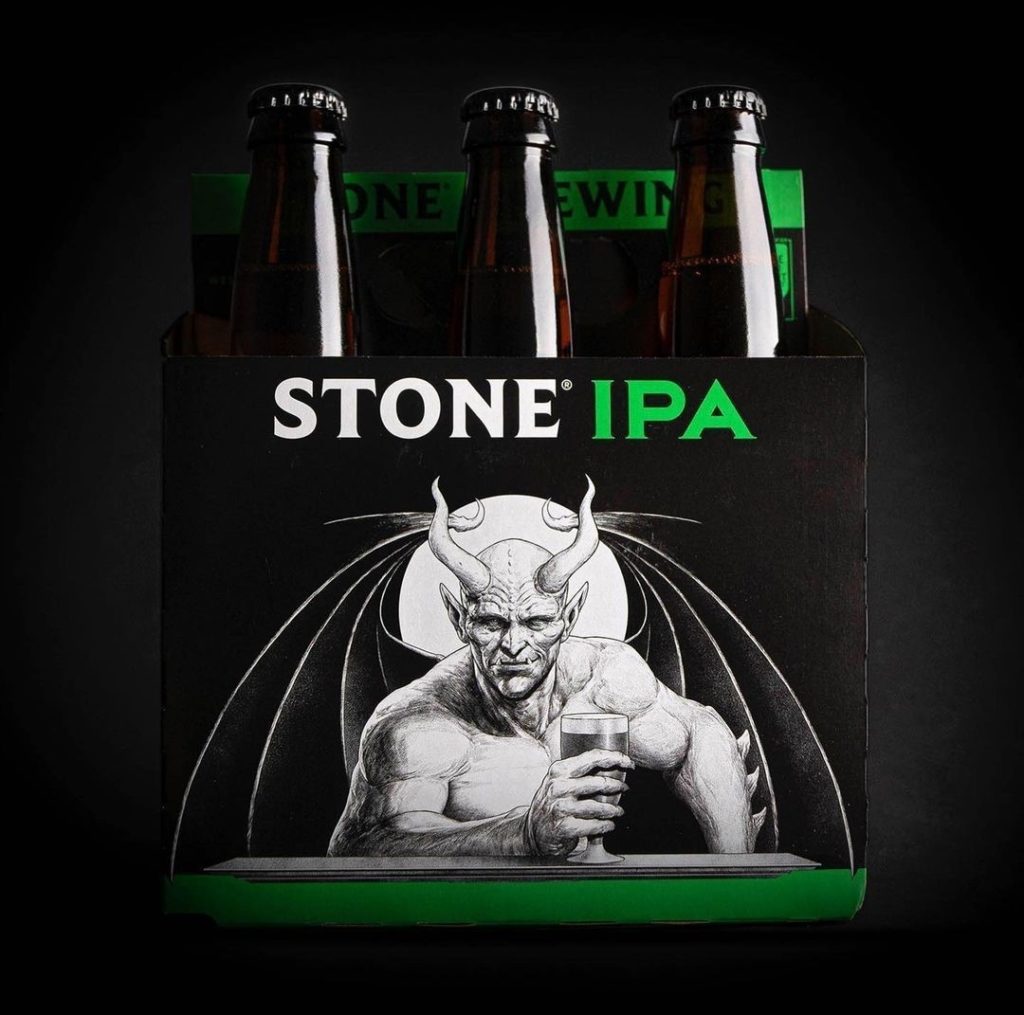
Photography courtesy of Stone Brewing
Stone IPA
Stone Brewing – Escondido, CA
First released in 1997 as Stone Brewing’s anniversary beer, Stone IPA has become one of the best-selling IPAs in the country. Stone IPA leverages Magnum, Chinook, and Centennial hops for a super hoppy, crisp take on the classic West Coast IPA. As the brewery writes on its website, “This beer is as bold, fresh, and flavorful today as it was back in ‘97.”
Union Jack
Firestone Walker Brewing Company – Paso Robles, CA
By all accounts Firestone Walker actually got into the IPA game late. Firestone Walker Brewmaster Matt Brynildson first brewed Union Jack in 2007. The brewery’s first IPA helped shape the history of the West Coast style. “Hopped to high hell yet eminently balanced from start to finish,” as the brewery writes on its website, Union Jack is packed with notes of grapefruit, citrus, and pine. Named after co-founder David Walker’s British roots, Union Jack is a beer that the brewery calls “loud and proud.” This beer has won a ton of major awards, including a Silver in the IPA category at the Great American Beer Festival.
Racer 5 IPA
Bear Republic Brewing Co. – Rohnert Park, CA
One of America’s most medaled IPAs, Racer 5 has become synonymous with West Coast IPAs. The iconic beer first earned a gold medal for American IPA at GABF in 1999. Since then the beer has won four medals at GABF, twelve medals at the California State Fair, and a silver in the American-Style India Pale Ale category at the World Beer Cup, among others. As the brewery writes on its website with Racer 5, “There’s a trophy in every glass.”
Pliny the Elder
Russian River Brewing Company – Windsor, CA
Technically an imperial or double IPA, Pliny the Elder eloquently captures the beauty of a West Coast IPA. Few American breweries have the same reputation as Russian River Brewing Company, founded in its present incarnation by Natalie and Vinnie Cilurzo in 2004. According to legend, Vinnie brewed the world’s first commercially available double IPA back in the mid-nineties when he worked at Blind Pig Brewing. He brought that innovation to Russian River Brewing Company.
The Windsor, California, brewpub has become a mecca for the craft-minded, who come from all over the world to try Russian River’s renowned IPAs (case and point: trying to snag Pliny the Younger, Russian River’s much-coveted triple IPA released just once a year and only at the brewery, has become almost a pilgrimage for craft beer lovers). Brewed with Amarillo, Centennial, CTZ, and Simcoe hops, Pliny the Elder is their classic double IPA, well balanced with pine, resin, and citrus hop aromas with a lingering, dry finish.
What Are a Few Newer West Coast IPAs to Try?
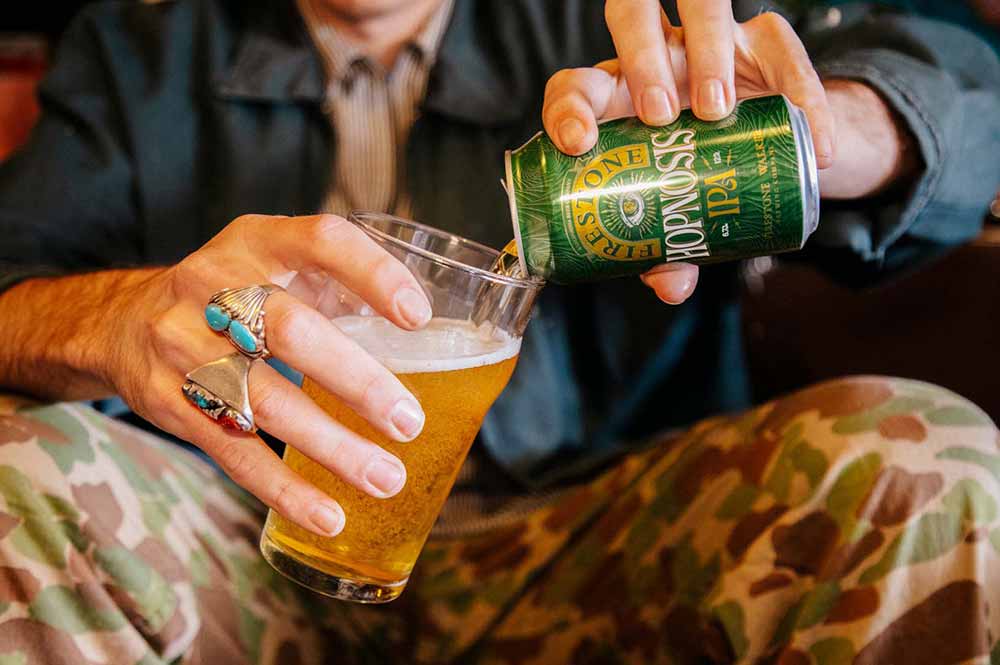
Photography courtesy of Firestone Walker
Hopnosis
Firestone Walker Brewing Company – Paso Robles, CA
Bringing a bit of new school to the West Coast IPA, Hopnosis features hops from around the world and a variety of hopping techniques. Such as Mosaic Cryo, Idaho 7, El Dorado, Cashmere, Nelson Sauvin, Riwaka, Simcoe, Talus, and Callista that all harmoniously come together. Perfectly balancing new-school hops and techniques—such as cryo hopping—with the old-school West Coast IPA style, Hopnosis seems poised to poetically represent what the future of beer looks like in 2022.
West Coast, Best Coast IPA
Breakside Brewery – Portland, OR
Packed with what Breakside calls the “new trinity of aroma hops,” West Coast, Best Coast IPA features Citra, Mosaic, Strata, and Nelson Sauvin, a Southern Hemisphere hop popping up in more and more American IPAs. This unique hop blend makes for an IPA bursting with tropical fruit, vibrant citrus, and juicy berry.
Various
Bagby Beer Company – Oceanside, CA
According to Jeff, Bagby Beer Company rotates through IPAs quite frequently, although there are generally only a couple on draft at any given time. Our recommendation is to go with what’s on tap, because you know it’s going to be fresh!
Strata (It’s What We Like Here)
Green Cheek Beer Company – Orange, CA
Only showcasing 100 percent Strata hops, this West Coast IPA actually goes a bit lighter on the bitterness. Green Cheek Co-owner and Brewer Evan Price uses Strata in all its glorious forms, from hopping in the whirlpool with whole leaf and pellets to dry hopping at the start and end of fermentation. The flavors? Green Cheek describes this beer as “strawberry jam, Maui Wowee, and orange blossoms.”

